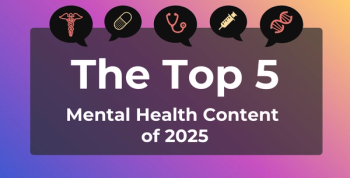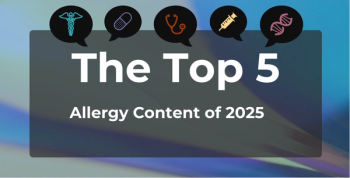
COPD, Dyspnea Exacerbations Decrease With Automated Oxygen Administration
Individuals with chronic obstructive pulmonary disease (COPD) experience improved breathing symptoms and dyspnea with use of automated oxygen administration.
Automated oxygen administration (AOA) was able to reduce breathing discomfort and dyspnea in patients with acute exacerbation in
“This study shows that AOA reduces dyspnea overall unpleasantness, in patients hospitalized with AECOPD and hypoxemia, when compared to conventional oxygen therapy,” wrote the researchers of the study. “The AOA also reduces all the 5 items within the sensory dimension of dyspnea, as well as dyspnea within the past 3 days, significantly when compared to conventional oxygen therapy.”
The results of this multicenter randomized control trial were published in
In this study, the researchers aimed to better understand the effect of AOA compared with conventional oxygen therapy, on the premise that AOA may be able to reduce dyspnea and the need for opioids and benzodiazepines among patients who have been hospitalized with AECOPD and hypoxemia.
This study recruited 157 patients from 5 respiratory wards in Denmark. Of the patients, 127 had completed data for the intervention. The patients eligible for inclusion within the first 48 hours after admission had a primary diagnosis of COPD, an expected length of hospital stay of more than 24 hours, and peripheral oxygen saturation (SpO2) less than 88% breathing room air; were 35 years or older; and provided written consent.
Patients were randomly assigned 1:1 to receive either conventional oxygen therapy (n = 63) or automated oxygen therapy (n = 64). Oxygen flow and SpO2 levels were measured in both groups, and dyspnea, anxiety, depression, and COPD symptoms were measured using patient-reported assessments.
AOA led to a significant reduction in overall unpleasantness, with a median difference of –3 (P = .003) between the AOA group and the conventional oxygen therapy group. Additionally, AOA also led to a significant difference between the 2 patient groups across all sensory domains of the Multidimensional Dyspnea Profile (P ≤ .05) and the Visual Analogue Scale-Dyspnea within the past 3 days (P=.013).
However, AOA did not have any significant impact on emotional status or other COPD symptoms.
The researchers believe that the open-label design of their study and potential patient bias may have limited the generalizability of their results. However, they believe there were many strengths to the study, including that both groups were balanced and had a reasonable amount of follow-up.
“During admission the high intensity of dyspnea often requires nurse attention, interventions, and time,” wrote the researchers. “Alleviating dyspnea by AOA may therefore not only impact the patients’ quality of life, the length of hospital stays, and nurse resources, but may also be a potential palliative intervention across different etiologies.”
Reference
Sandau C, Hansen EF, Ringbæk TJ, et al. Automated oxygen administration alleviates dyspnea in patients admitted with acute exacerbation of COPD: a randomized controlled trial. Int J Chron Obstruct Pulmon Dis. 2023;18:599-614. doi:10.2147/COPD.S397782
Newsletter
Stay ahead of policy, cost, and value—subscribe to AJMC for expert insights at the intersection of clinical care and health economics.







































